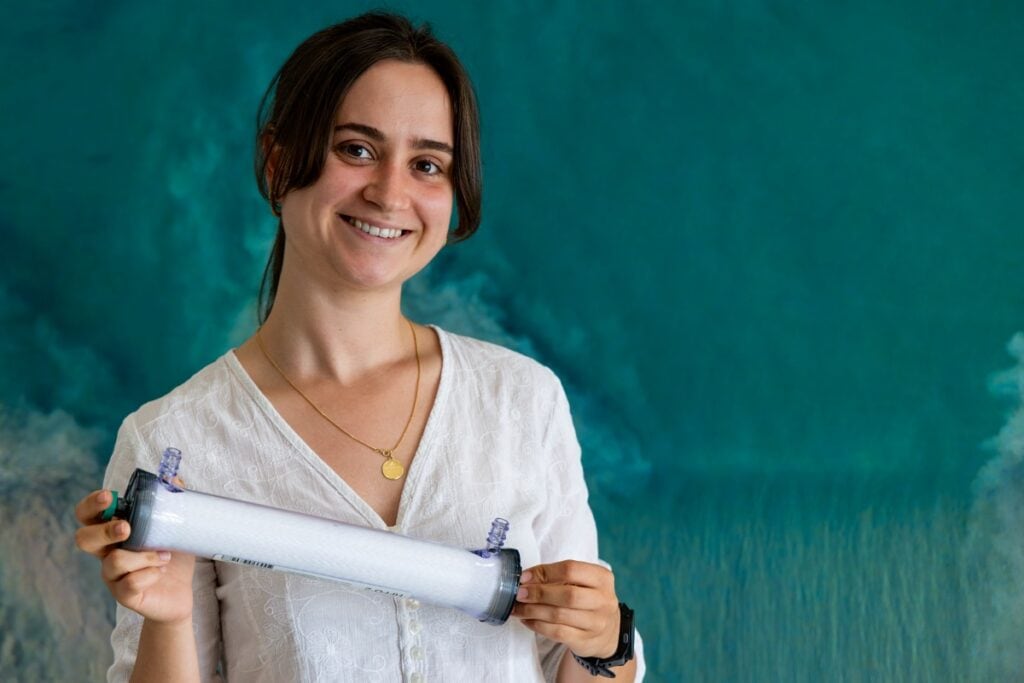How do we make membranes at Aquaporin?

At Aquaporin, we design and produce innovative reverse and forward osmosis membranes for liquid separation that can be applied during water treatment, food processing, pharmaceutical wastewater treatment, and much more. If you’re curious to know how we do it and where our challenges and opportunities lie, I give you a sneak peek here.
By Maria Salud Camilleri Rumbau, Team Leader & Senior Membrane Applications Specialist at Aquaporin
Making a good membrane
To make a good membrane, a mixture of scientific disciplines including organic and polymer chemistry, materials science, and membrane and chemical engineering come together during the process which spans all the way from fabrication to quality control. At Aquaporin, membrane experts, scientists, and engineers have been developing membranes with incorporated aquaporin proteins for years. We use a special formulation that encapsulates the aquaporin proteins, also known as water channels, in a membrane matrix during the fabrication process. The result is a high-performing technology and membrane, both when it comes to water transfer and pollutant rejection. After our membranes are manufactured, their quality is evaluated in a series of tests to validate the characteristics of the final product. For example, when we fabricate forward osmosis membranes, parameters such as water flux, reverse solute flux, and solute forward rejection are evaluated to ensure a high membrane performance.
Increased demand for tailored membrane technologies
The most widely used membrane technologies for water treatment and desalination are reverse osmosis and electrodialysis. Both technologies have been among us for decades and are widely studied. But something is changing. Currently, I see an increasing interest in more tailored membrane technologies such as forward osmosis, membrane distillation, and membrane capacitive deionization. Common to them is that, in comparison to traditional membrane techniques, they offer industrial applications numerous technical advantages such as improved pollutant rejection and valuables recovery.
Membranes’ unspoken limitations
However advantageous they are, membranes also have some limitations. The membranes we develop at Aquaporin require sustained water permeability and solute rejection to be able to perform during pollutant removal, nutrient recovery, aroma recovery, desalination applications, et cetera. But, despite the high resistance to chemicals, varying temperatures, and pH from the Aquaporin formulation, the polymeric matrix of our membranes presents some challenges which we continuously seek to solve in our R&D activities.
In the next blog, Maria Salud unfolds all you need to know about membranes.




